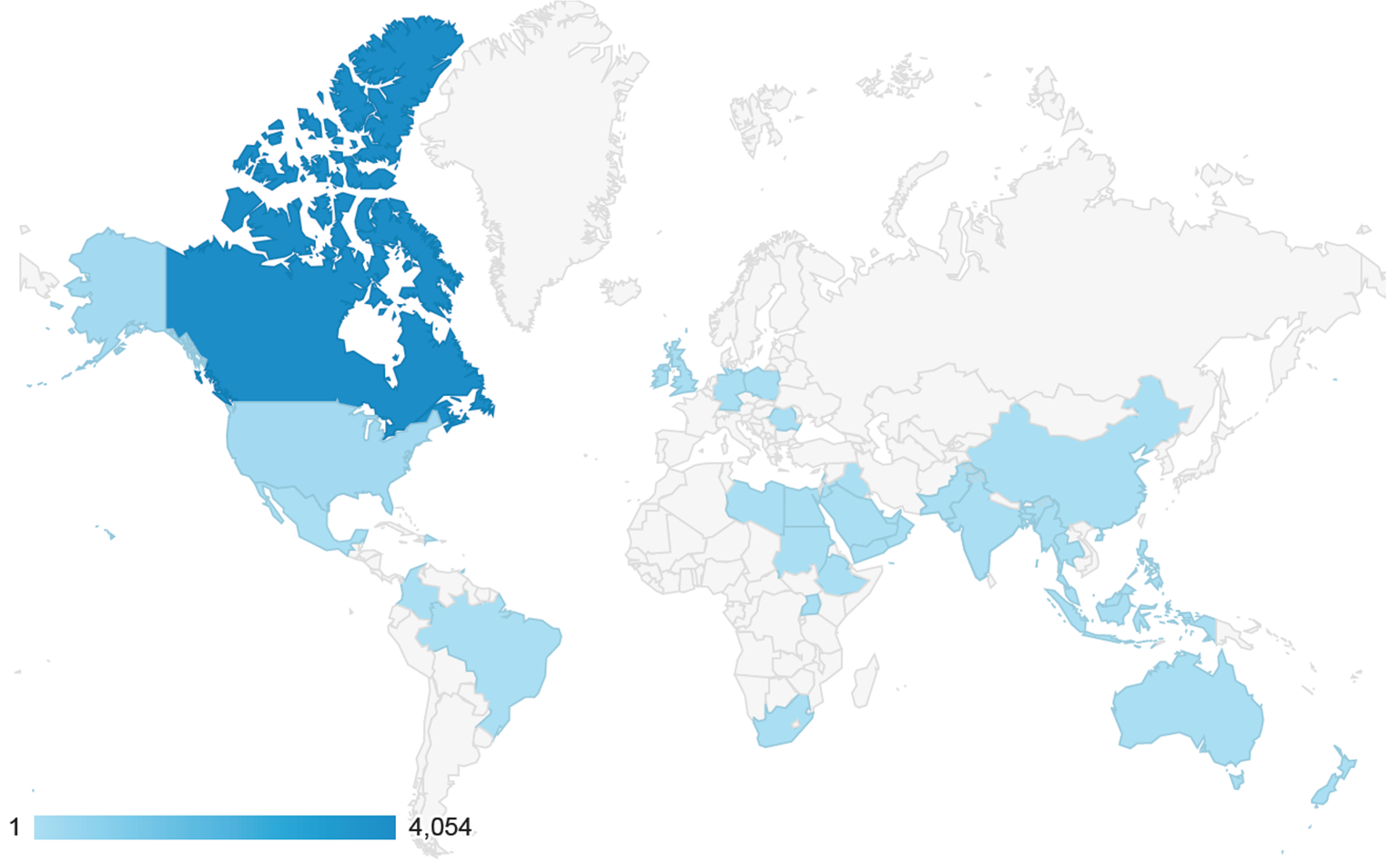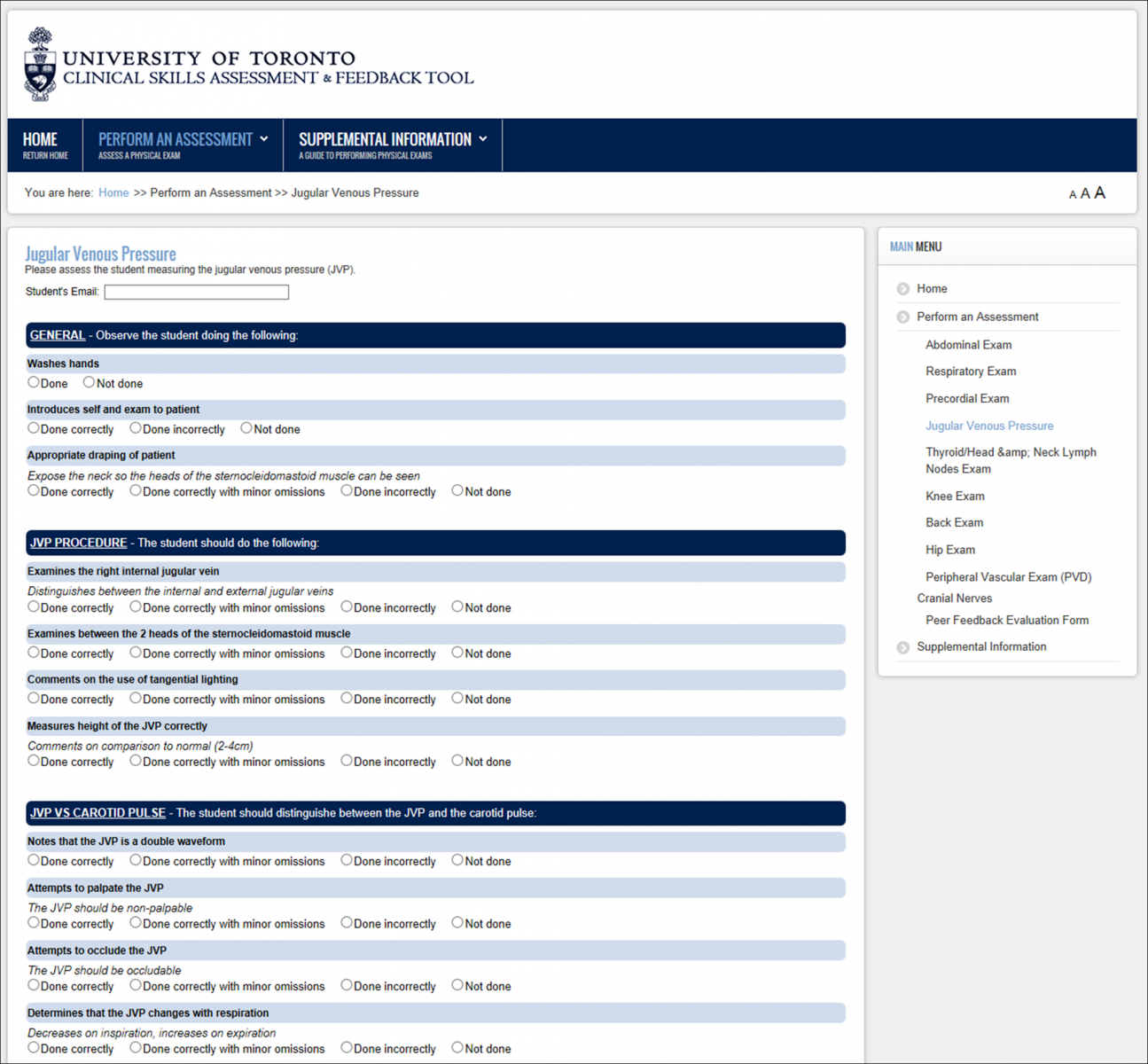
| Theme: Student as teacher | |||
 |
||||||
| Development of a mobile web-based tool for competency-based peer assessment of clinical skills |
 |
|||||
|
||||||
Traditionally, students have learned clinical skills by reading text-based resources describing proper technique. Given the recent shift to competency-based education and push to move education out of the classroom and into clinical environments, we have created a tool to facilitate peer-based teaching and feedback of clinical skills in real time.
The tool can be accessed at www.clinicalskillstoronto.com
Our student-led initiative is a mobile, web-based tool to aid in peer-to-peer observation and feedback in clinical settings. It contains assessment forms for specific physical exams enabling students to observe each other performing physical exam maneuvers. The tool then emails the student with immediate, objective feedback. It also contains a multimedia-rich resource for learning physical exam skills. The tool was piloted with medical students in their preclinical years to assess for uptake and perceptions.
Example of Assessment Form
The tool was extremely well received by administrators and students and has now been integrated into the preclinical curriculum. Since its introduction, the tool has seen consistent use, increasing prior to examinations in December and May. It has been received favorably by both students and faculty.
Visits by Week

While the tool has been primarily used in Canada, it has also been used by people around the world.
Tool Use by Country (Site Visits)

This novel tool addresses the need for competency-based assessment of clinical skills training in medical education, while encouraging students to learn in the clinic instead of the classroom. In the future, this tool could be used to formally track students’ competency in clinical skills. Advanced layers of content could also be added to increase yield for senior medical students and residents.
Our tool provides a new way for students to learn and practice clinical skills by enabling real-time observation and feedback in a user-friendly, easily accessible format.
We would like to thank the Centre for Excellence in Education and Practice for their generous support throughout this project.
We would also like to thank the following individuals for their support and guidance: Dr. Rodrigo Cavalcanti, Dr. Danny Panisko, Dr. Herbert Ho Ping Kong, Dr. Martin Schrieber, Dr. Jean Hudson, Dr. Raj Gupta, Dr. David Wong, and Sarah Meilach


 Send Email
Send Email